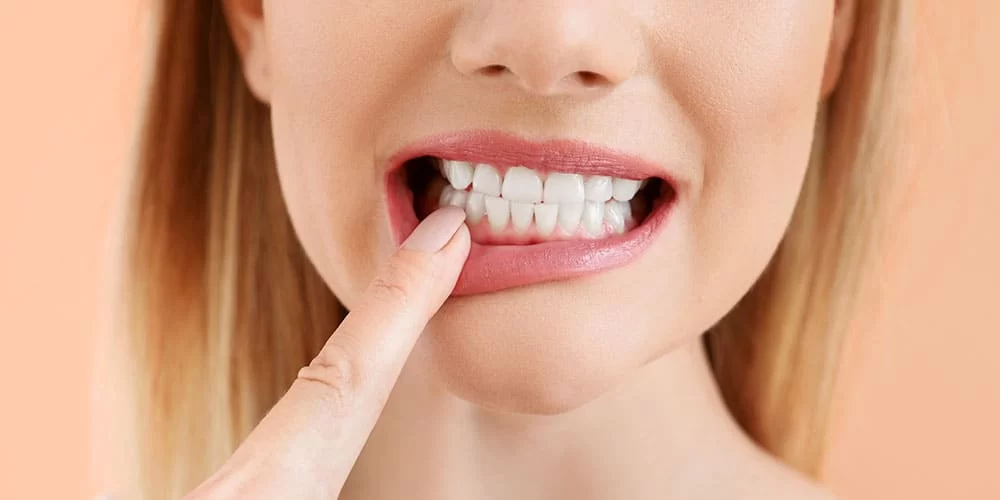
What Causes Tooth Enamel Erosion? Understand the Factors Behind Enamel Loss
- Understanding Tooth Enamel Erosion
- Top Causes of Tooth Enamel Erosion
- Signs of Tooth Enamel Damage
- How to Prevent Enamel Erosion
Understanding Tooth Enamel Erosion
Tooth enamel is the hard, outer layer of your teeth that serves as a protective shield against decay, heat, and cold. It's the hardest substance in the human body, but it's also quite vulnerable to erosion over time. Enamel erosion occurs when this protective layer wears away, exposing the more sensitive inner layers of the tooth.
The erosion of tooth enamel is a gradual process that can lead to tooth sensitivity, discoloration, and increased risk of cavities. While enamel cannot regenerate once it’s worn away, understanding the causes of enamel erosion can help you take proactive steps to protect your teeth.
Top Causes of Tooth Enamel Erosion
There are several factors that contribute to the erosion of tooth enamel. Some causes are within your control, while others might be due to lifestyle habits, dietary choices, or even underlying medical conditions. Below are the most common reasons why enamel erodes over time.
1. Poor Oral Hygiene
One of the leading causes of tooth enamel erosion is inadequate oral hygiene. Failing to brush and floss regularly allows plaque to build up on your teeth. Plaque contains acids that attack the enamel, leading to its breakdown. Without proper brushing, the plaque and acids remain on the surface, weakening your enamel and increasing the risk of cavities.
2. Acidic Foods and Beverages
Frequent consumption of acidic foods and drinks, such as citrus fruits, soda, and wine, can significantly contribute to enamel erosion. These substances soften the enamel, making it more susceptible to wear and tear. Drinking sugary or acidic beverages, especially between meals, prolongs the exposure of your enamel to harmful acids.
A well-known example is soda; its combination of acid and sugar creates a perfect environment for enamel damage. People who drink soda regularly often experience noticeable erosion, especially around the gumline.
3. Acid Reflux Disease
Acid reflux or gastroesophageal reflux disease (GERD) is a medical condition where stomach acid backs up into the esophagus. This acid can also reach the mouth, exposing your teeth to harmful acid that can gradually erode the enamel. Individuals with frequent heartburn or acid reflux often experience enamel erosion, particularly on the back teeth.
4. Dry Mouth (Xerostomia)
Saliva is essential for neutralizing acids in the mouth and washing away food particles. A lack of adequate saliva production, a condition known as dry mouth, can increase your risk of enamel erosion. Saliva helps maintain the pH balance in your mouth, and when it's insufficient, acids remain on your teeth longer, leading to enamel breakdown.
5. Bruxism (Teeth Grinding)
Grinding or clenching your teeth, especially during sleep, can lead to significant wear on your enamel. This habit, known as bruxism, puts excessive pressure on the teeth and causes them to grind against each other. Over time, this results in thinning enamel, which makes the teeth more prone to damage, cavities, and sensitivity.
Signs of Tooth Enamel Damage
Enamel erosion doesn’t happen overnight, and the symptoms can develop slowly over time. The earlier you can spot the signs of enamel damage, the easier it is to take action and prevent further deterioration. Here are some of the key signs that your enamel may be wearing down:
1. Tooth Sensitivity
One of the first signs of enamel erosion is increased tooth sensitivity. You might experience discomfort when eating hot, cold, or sweet foods. If your teeth are suddenly sensitive, especially to cold drinks or ice cream, it's a strong indicator that your enamel is thinning.
2. Yellowing of Teeth
As the enamel wears away, the yellowish layer of dentin beneath it becomes more visible. This can cause your teeth to appear more yellow or dull, even if you maintain good oral hygiene. The natural shine of your teeth can be lost due to thinning enamel, leading to a less vibrant smile.
3. Rough or Transparent Edges
When enamel is eroded, the edges of your teeth may become rough or jagged. In some cases, the tips of your teeth, particularly the front teeth, may begin to look transparent, especially near the gums. This is a clear sign that the enamel is thinning and being worn away.
How to Prevent Enamel Erosion
While enamel erosion is irreversible, there are several measures you can take to prevent further damage and protect your enamel. By making smart choices about your oral care, diet, and lifestyle, you can keep your teeth strong and healthy for years to come.
1. Brush with a Soft-Bristled Toothbrush
Brushing your teeth properly is essential to maintaining enamel health. Use a soft-bristled toothbrush and fluoride toothpaste to gently clean your teeth without causing additional wear. Hard bristles or excessive brushing pressure can cause enamel to erode faster.
2. Avoid Acidic Foods and Drinks
Limit your intake of acidic foods and drinks, especially those high in sugar. If you do consume acidic beverages, try to rinse your mouth with water afterward. Avoid brushing immediately after consuming acidic foods, as this can push the acids deeper into the enamel and cause more damage.
3. Use a Mouthguard for Teeth Grinding
If you suffer from bruxism or teeth grinding, consider wearing a mouthguard at night. This will help protect your teeth from excessive pressure and friction while you sleep, reducing the risk of enamel erosion.
4. Stay Hydrated and Manage Dry Mouth
Drink plenty of water throughout the day to keep your mouth hydrated and promote saliva production. If you suffer from dry mouth, consider using a saliva substitute or chewing sugar-free gum to stimulate saliva flow.
Protecting your enamel starts with being aware of the causes of enamel erosion and taking preventive measures to maintain your dental health. For more tips and personalized care, visit Dentistry Toothtruth to learn more about enamel protection and oral health.







 Bruce L Rothschild DDS & Associates PLLC0.0 (0 review)
Bruce L Rothschild DDS & Associates PLLC0.0 (0 review) Dr. Nathan Hammond4.0 (346 review)
Dr. Nathan Hammond4.0 (346 review) Highland Dental4.0 (168 review)
Highland Dental4.0 (168 review) Gannett Drive Dental4.0 (63 review)
Gannett Drive Dental4.0 (63 review) Toluca Lake Cosmetic Dentistry4.0 (71 review)
Toluca Lake Cosmetic Dentistry4.0 (71 review) Southwest Family Dental4.0 (238 review)
Southwest Family Dental4.0 (238 review) The Importance of Oral Health Education During Pregnancy for a Healthy Pregnancy
The Importance of Oral Health Education During Pregnancy for a Healthy Pregnancy Best Tips for Brushing Your Teeth Properly for Healthy Gums: Essential Techniques for Oral Health
Best Tips for Brushing Your Teeth Properly for Healthy Gums: Essential Techniques for Oral Health Why Skipping Dental Checkups Can Lead to Bigger Oral Health Problems
Why Skipping Dental Checkups Can Lead to Bigger Oral Health Problems Advantages of Porcelain Dental Restorations
Advantages of Porcelain Dental Restorations How Can Diabetes Cause Tooth and Gum Problems? Preventing and Managing Oral Health Issues
How Can Diabetes Cause Tooth and Gum Problems? Preventing and Managing Oral Health Issues Healthy Habits for Promoting Good Oral Health and Hygiene: Tips for a Healthy Smile
Healthy Habits for Promoting Good Oral Health and Hygiene: Tips for a Healthy Smile